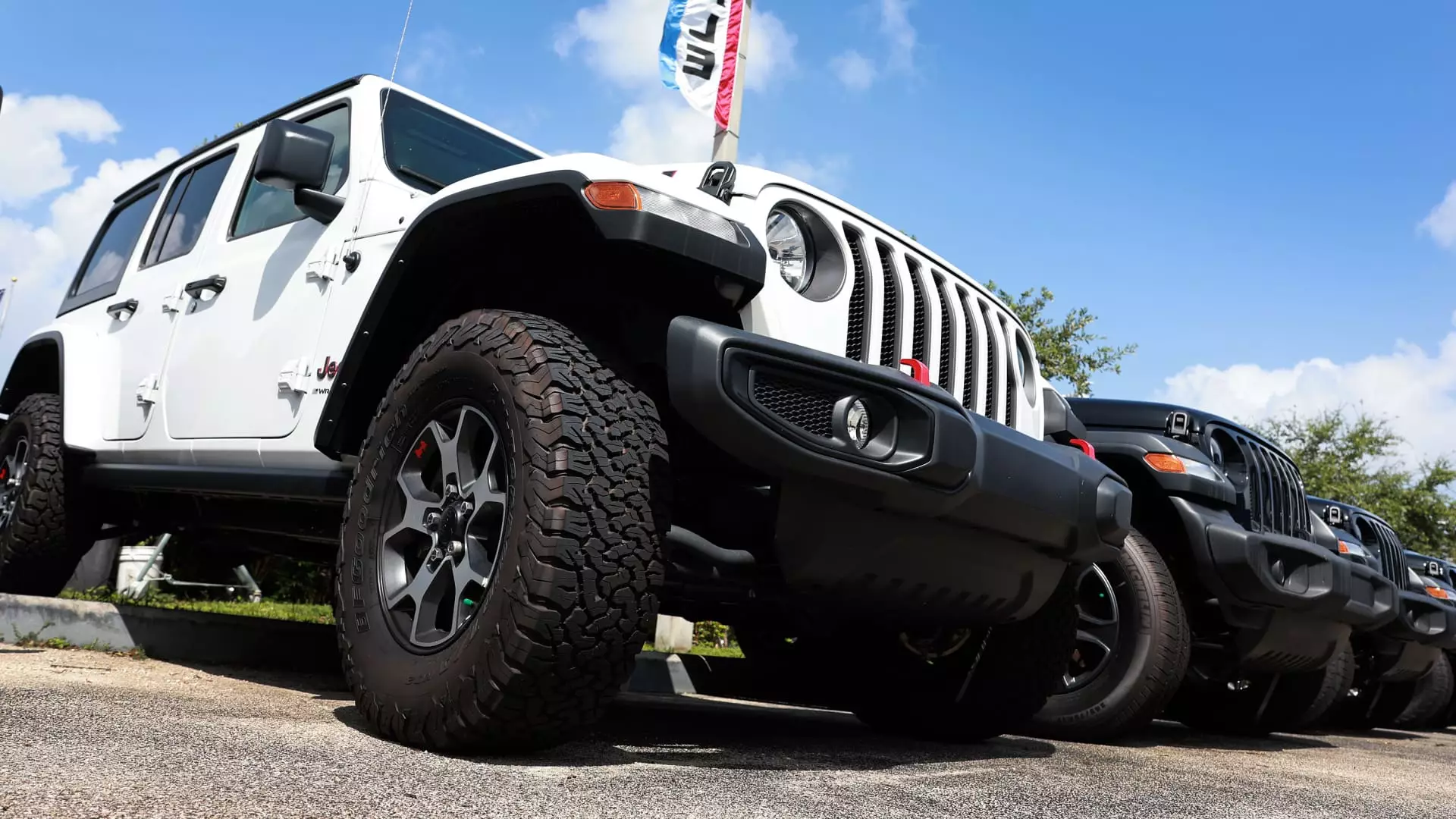The U.S. automotive market is experiencing a significant shift as third-quarter sales projections reveal a stagnation fueled by various economic factors and industry dynamics. With sales expected to decrease by around 2% from a year earlier, many industry analysts are reevaluating their forecasts and dissecting the underlying causes of these market challenges.
Analysts project that approximately 3.9 million vehicles will be sold in the third quarter of 2024, aligning with trends indicative of a struggling marketplace. Compared to the previous quarter, this anticipated figure represents a decline of nearly 5%, reflecting ongoing consumer hesitation amid economic uncertainties. Factors such as rising interest rates, high vehicle prices, and fluctuating political landscapes contribute to the reluctance of potential buyers to make new car purchases.
Although the Federal Reserve’s recent decision to cut rates offers a glimmer of hope, experts caution against overconfidence. Charlie Chesbrough, the senior economist at Cox Automotive, highlights that “affordability remains the main obstacle to a stronger market.” While there are reasons for cautious optimism as affordability shows signs of improvement, the overarching sentiment remains that a significant rebound in sales is not assured.
According to projections from both Cox Automotive and Edmunds, sales for 2024 are anticipated to total around 15.7 million vehicles. This represents a slightly revised forecast, with Cox reducing its previous estimate from 16 million due to a tight market. The current conditions suggest that many consumers are feeling the pinch, leading to financing amounts averaging at a staggering $40,000 per vehicle. Jessica Caldwell from Edmunds notes that the persistent question around affordability looms large, effectively narrowing the field of potential buyers.
In essence, while pricing may have decreased somewhat from a year prior, the average transaction price still rests at a lofty $47,870, showcasing the financial strain on consumers. Manufacturers need to critically assess pricing strategies if they aim to tap into a wider customer base.
As the market fluctuates, some automakers are positioned to thrive while others struggle to maintain relevance. Honda and Ford are among the few players expected to see growth this quarter, largely bucking the trend observed by competitors. Meanwhile, Stellantis, Toyota, and BMW are projected to face substantial drops in sales, with Stellantis potentially undergoing a 21% downturn in its quarterly performance. The manufacturer’s leadership has prioritized profitability over market share, which raises questions about the long-term viability of their market presence.
The shift in sales dynamics further accentuates a battle for market share in the growing electric vehicle (EV) sector. While EV sales are anticipated to experience an 8% increase in Q3 2024, the pace of growth remains sluggish compared to early industry forecasts. Tesla, which has held a dominant position in the EV market, is expected to see its sales dip by 2.4%, marking a challenging phase for the company as it faces increasing competition and regulatory challenges.
Despite the overall hesitance in vehicle sales, the electric vehicle market is receiving a boost from government incentives aimed at encouraging adoption. The U.S. government is offering up to a $7,500 tax credit for qualifying electric vehicle purchases. This incentive system has played a critical role in shaping consumer decisions, particularly as transaction prices for EVs remain nearly stable year-over-year. Remarkably, incentives for EVs now account for 13.3% of average transaction prices, a stark contrast to the 7% typical for traditional internal combustion engine vehicles.
This increase in incentives highlights an ongoing strategy to stimulate demand, particularly as Tesla’s market share is forecasted to fall below 50% for the second quarterly stretch. As competition intensifies, companies must innovate and adjust their offerings to capture a market that is becoming increasingly price-sensitive.
As the automotive industry navigates through these turbulent waters, understanding consumer behavior will be paramount to securing a more prosperous future. It is clear that the automotive landscape is evolving; manufacturers must adapt to changing economic conditions and consumer needs.
With 2024 set to be another potentially volatile year, the onus will be on industry players to identify effective strategies to enhance affordability and attract the broadest possible consumer base. Only time will reveal whether the anticipated shifts in the market will yield significant improvements or if challenges will continue to dominate the landscape for the foreseeable future.

Leave a Reply